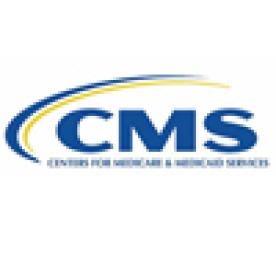On March 21, 2018, a representative from the Hospital and Ambulatory Policy Group at the CMS, held a listening session regarding proposed updates to documentation guidelines for Evaluation and Management (“E/M”) Services. The purpose of this listening session was for the agency to obtain stakeholder feedback in order to develop policy proposals for upcoming notice and comment rulemaking, which, according to the CMS, will require a multi-year, collaborative effort among the agency and providers. Despite the warning of a Sisyphean task ahead, the CMS seems focused on reducing the burdens associated with the documentation requirements, which date back to 1995. Perhaps the effort will be moot as documentation as the driver of reimbursement will be replaced with clinical and quality outcomes. While the industry is certainly on this path – moving from “if it is not documented, it has not been done” to “if there is no value, it has not been done,” coding remains key and the 20 year old guidelines must be re-visited in light of the current state of the practice of medicine, especially the wide-spread use of electronic health records (“EHRs”).
Background
In compliance with Medicare guidance, billing providers must maintain information in the medical record that ties to the appropriate level of E/M visit code. There are two versions of the documentation guidelines, referred to according to the year they were released – the “1995” and the “1997” guidelines. The CMS has repeatedly heard from providers and coders that these guidelines are administratively burdensome and outdated in relation to the practice of medicine today. Many have stated they are geared toward the practice of medicine as it existed in the 1980s.
In response, in the Calendar Year 2018 Medicare Physician Fee Schedule proposed rule, the CMS sought comment from stakeholders on specific changes the agency should undertake to modify the guidelines, reduce the associated burdens and better align E/M coding and documentation with the current practice of medicine. CMS stated that the drivers for the re-examination include “significant changes in health care practice, especially innovations in the active management and ongoing care of chronically ill patients” and “significant changes in technology, especially electronic health record use, which presents challenges for data and program integrity and potential upcoding given the frequently automated selection of code level.”
CMS’ Questions and Input from the Industry
The CMS asked for input in response to several questions on the call. Among the questions was how can the agency reduce the burdens associated with E/M documentation. Callers consistently lamented that documentation is repetitive – especially elements in the family and social history categories. Physicians may only need an interval history since the last visit due to extensive information captured in the EHR. Others suggested that the CMS reduce the number of levels from 5 to 3 or 4 and that the selection of the appropriate level should hinge more on medical decision making and not on history. Many commenters requested that the guidelines be revised to reflect team-based care and better recognize that clinicians should be able to rely on staff members, including LPNs, to capture certain elements. According to these callers, rules regarding which individuals can enter what information in the EHR are confusing and are a barrier to systems trying to engage in meaningful documentation.
The CMS also asked for feedback on what approaches to payment and documentation those outside of Medicare, such as private insurers, use for E/M visits by level. Callers alerted CMS to the fact that different MACs often have different requirements for the same codes and requested the agency to work with the MACs to create consistency. They also complained that many payors have their own interpretations of the guidelines as, over the past 20 years, payors have “filled in the gray areas” in the agency’s guidelines. One caller requested that the CMS recognize that commercial payors rely on these guidelines, which are not conducive for visits relating to pediatric patients.
In response to the CMS’ inquiry about how much of a role the currently required items (history, physical exam, and medical decision-making) play in supporting an E/M visit level for payment, over and over again providers requested that the agency focus less on the patient’s history and more on medical decision making.
Conclusion
There appears to be alignment between the CMS’ comments in the proposed rule and feedback received from stakeholders. All seem to agree that medical decision-making and time are the more significant factors in distinguishing visit levels. The necessity for extended histories and exams is being replaced by population-based screening and intervention. Despite the burdens and limitations of the current E/M code set, CMS spelled out that their short term focus is on revising the guidelines – not on a complete restructuring.



 i
i


